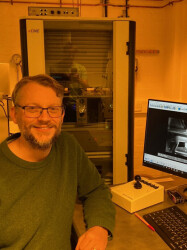BibTex format
@article{Dion:2021:10.1103/PhysRevResearch.4.013107,
author = {Dion, T and Gartside, JC and Vanstone, A and Stenning, KD and Arroo, DM and Kurebayashi, H and Branford, WR},
doi = {10.1103/PhysRevResearch.4.013107},
journal = {Physical Review Research},
pages = {1--9},
title = {Observation and control of collective spin-wave mode-hybridisation in chevron arrays and square, staircase and brickwork artificial spin ices},
url = {http://dx.doi.org/10.1103/PhysRevResearch.4.013107},
volume = {4},
year = {2021}
}

